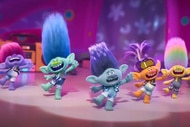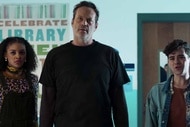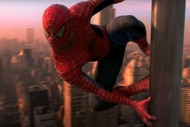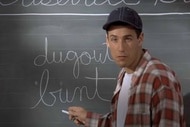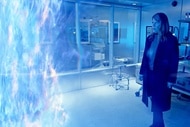Create a free profile to get unlimited access to exclusive videos, sweepstakes, and more!
From a new Cap to Loki's Tesseract love story: The MCU's 12 most iconic moments (so far)
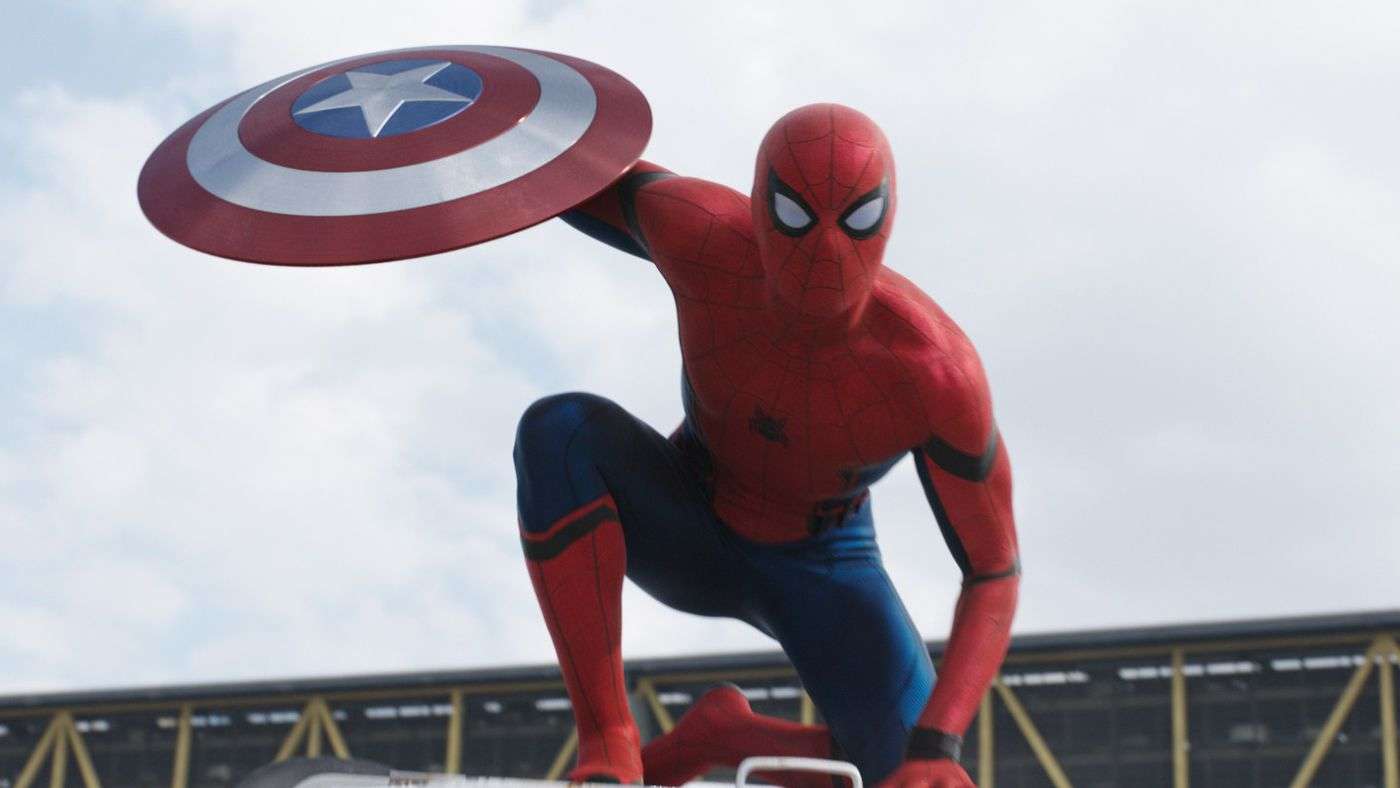
It is impossible to overstate how big a deal Captain America: Civil War was (and still is) when it was released five years ago this week.
The Russo Brothers’ second movie in the Marvel Cinematic Universe had the unenviable task of not only finding a credible and emotionally honest way to pit the Avengers against one another, but to also set up narrative tentpoles through which to thread the road to Avengers: Endgame while bringing another studio’s cash cow, Spider-Man, into the mix. The fact that they pulled it off in an effortlessly satisfying and entertaining way is almost as unbelievable as the abilities Civil War’s lead characters possess.
However, the third Captain America movie (aka Avengers 2.5) is just one of many significant milestones in the evolution of producer and Marvel Studios head Kevin Feige’s plan to make Marvel, well, Marvel. In honor of Civil War’s fifth anniversary, and to celebrate 13 years of Marvel Studios’ big-screen adventures, here’s a look back — in order of release — at the 12 most memorable events that helped build the MCU.
12. Nick Fury’s Avengers Initiative end credits tease
“I’m here to talk to you about the Avengers Initiative.”
Samuel L. Jackson’s Nick Fury uttered those now-iconic words when he stepped out of the shadows and revealed himself to Tony Stark (Robert Downey Jr.) during Iron Man’s end credits scene, but it felt like our favorite S.H.I.E.L.D. director was directly addressing the audience.
Jon Favreau’s 2008 Iron Man movie kicked off the MCU in a way that delivered the exact amount of whatever Marvel needed to win over audiences and fans at the multiplex. As comic book movie origin stories and summer blockbusters go, this one did its job and did it well.
This little tease, which was our first glimpse of Feige’s overarching plan for the MCU (though nobody had any idea just how grand that plan would become), was just the cherry on top of an already very satisfying sundae. Originally intended as almost a lark that the filmmakers hoped to one day realize, Jackson’s cameo as Fury set the stage for all that has happened in the Marvel Cinematic Universe. It also conditioned audiences, Pavlov’s Dog-style, to expect one or two end-credits scenes with their Marvel movies, with the teases becoming as woven into the fabric of these movies as the opening gun barrel logo is to James Bond films.
11. Introducing the Tesseract
The Tesseract has to be the MVP of MacGuffins. It’s been over a decade since the cube full of swirly blue energy/future Infinity Stone made an appearance and we are still dealing with it. (Heck, without the Tesseract, Loki wouldn’t have had a way to make his exit and jump over to his very own Disney+ TV series.)
First glimpsed as a sketch in Iron Man 2, the Cube would go on to appear in 10 MCU movies — and feature as a key plot device in two of them: Captain America: The First Avenger and The Avengers. It’s power to bend and alter space put it high on Thanos’ list of things to acquire, sending the Mad Titan on a lengthy campaign to get it and destroy anything and anyone in his way.
Loki also coveted the Cube, using it to bring the Chautari alien army to Earth via wormhole. Luckily, the Avengers were there to stop both villains — but the Tesseract promises to continue to be a frequent thorn in their collective sides.
10. Enter Loki
With 2011’s Thor and 2012’s The Avengers, fans embraced Tom Hiddleston's mischievous portrayal of Loki to the point of instant iconic status.
Thor’s adopted brother quickly emerged as the Big Bad of Phase One of the MCU, giving his brother grief in the first Thor and then acting as an emissary of doom for Thanos’ first salvo against humanity and the Avengers. It was Loki who helped bring flying alien space eels to New York City and cut a bloody swath through most of the Big Apple until Hulk smashed this “puny god.”
However, Loki was just getting started; the trickster had at least three double-crosses up his sleeves at all times, proving to be quite the permanent migraine for Thor and the rest of the team. Loki’s presence was near-constant in the early years of the MCU, thanks to his plots and schemes having a ripple effect on every major storyline post-2012’s Avengers.
In one of the alternate timelines the Avengers visited in Endgame, a different version of Loki got his hands on the Tesseract and bamf’d off to who knows where. Nothing good comes when he and it are together, and we will soon see how their latest pairing impacts the MCU when Loki premieres on Disney+ in June.
09. Black Widow’s first fight
Going into Iron Man 2, fans knew that Scarlett Johansson was eventually going to be revealed as Marvel’s super spy, Black Widow. What fans didn’t know was how integral the character would become to the MCU.
The moment Natasha took out a couple of thugs with her signature leg-fu moves, the character instantly became someone audiences wanted to spend more time with and a character to which Marvel should give more screentime. The Avengers made all of that possible. The blockbuster set the stage for the character to become such a load-bearing column for the Avengers that the rest of the team struggled to support each other after she sacrificed her life for a second chance to save all the ones they lost to Thanos.
Natasha went from being a clever but haunted assassin with “red on her ledger” to one of the most endearing and sympathetic characters in the MCU. Whether she’s tussling with Loki’s alien army or eating the saddest peanut butter sandwich ever in Endgame, Black Widow (and Johansson’s dynamic portrayal of her) is a character you just can’t get enough of — as evidenced by her own upcoming spin-off movie, a prequel of sorts set before the events of Endgame, coming later this summer.
08. The first time the Avengers Assemble
Marvel Studios has given movie audiences several iconic, “stand-up-and-cheer” worthy moments on the big screen, and the shot orbiting the Avengers in their debut film after they first assemble is one of their greatest.
The whole movie serves as both a payoff to Phase One’s ambitious serialized narrative and as another brick on the road to where the franchise is now. Comic book fans waited decades to see Earth’s Mightiest Heroes share the screen together, and the Battle of New York rewards them for their patience with this show-stopping shot. The scene establishes the core group of heroes right before they embark on their first “big” battle to save Earth from all that wants to conquer it. At the time, this conflict seemed to be the biggest and worst Cap, Natasha, Tony, Bruce, Clint, and Thor would face.
In retrospect, it seems like a Golden Age compared to the fights they would win (and lose) in future films.
But this one shot speaks volumes; there’s almost a meta quality to it, as it firmly establishes that Marvel Studios’ great experiment is more than just a novelty or box office fad. It’s one of those definitive tentpoles of pop culture, on par with Star Wars, and these six heroes are at the epicenter of it all.
07. The Russo Brothers set a new MCU tone in Captain America: The Winter Soldier
Who knew the directors of You, Me and Dupree would help forever change the business of making blockbusters?
Joe and Anthony Russo, two brothers from Cleveland with sitcoms like Happy Endings and Community on their directing resume, would become Marvel’s equivalent to Christopher Nolan during the back half of the MCU. Starting with The Winter Soldier, the Russos inherited the next five years' worth of Avengers and Cap-centric storylines as Feige’s great experiment kick-punched its way to an epic payoff with Endgame. The filmmakers proved effortlessly adept at building summer blockbuster spectacle on the backs of characters you can’t help but care about and root for.
They and their frequent collaborators, screenwriters Christopher Marcus and Stephen McFeely, helped establish a new tone for the MCU in Phase Three — one full of humor, character-first action, and big emotional stakes. Their imprint on the MCU was, at best, profound. And it will continue to be felt as long as Hollywood stays in the comic book movie business.
06. Vision's birth and death
Avengers: Age of Ultron is a noble misfire. The more personal and darker Ultron felt at times both too much and not enough narratively as the sequel seemed more interested in sympathizing with the sinister (and funny) Ultron and his plans for destroying humanity than having that plot shake hands with Tony’s need to protect Ultron’s target at any cost. Despite that bumpy structure, Ultron gave us some truly inventive set pieces (Hulkbuster armor fight!) and some of the series' best character moments. One of its most significant scenes is the “birth” of Vision, a sequence that has arguably had a greater impact on the franchise than the movie it appeared in.
Paul Bettany gets a chance to step out of the voiceover booth as the A.I. JARVIS and take on Vision’s virtually indestructible form as he joins the ranks of the Avengers. He’s their version of Star Trek: The Next Generation’s Data; a sentient superhuman being who would trade all that in to better understand what it means to be human. This machine would become the beating heart of the Avengers, a character so vital to the Marvel Cinematic Universe that his death would force his lover, Wanda Maximoff (Elizabeth Olsen), to fracture it and create a new reality to help cope with her difficult loss. And to think it all started with an artificial intelligence who sometimes “says the wrong cranberry.”
05. Spider-Man swings into the MCU
Marvel Studios wanted to put Spider-Man in their movies for a long time, but with the character licensed to Sony since 1999, that prospect was untenable. But 15 years later, backed by Disney and billions in box office success, Marvel set out to make a deal with Sony Pictures that allowed Spidey to play in the MCU sandbox. Negotiations between the three studios were, at times, tenuous. Ultimately, the companies forged an unprecedented partnership that stunned the industry and sparked a profitable shared universe on the big screen.
As the worst-kept secret of Captain America: Civil War, Spider-Man was primed to swing into the MCU in truly epic fashion — and get the on-screen treatment he deserved after the Amazing Spider-Man debacle Sony Pictures has all but discounted. Tom Holland’s portrayal of the Wall-Crawler was met with near-unanimous praise from critics and fans alike, which was a good thing seeing as how Spidey’s successful debut in Civil War would help spawn his own franchise. It’s hard to imagine a world without Spidey or Civil War’s splash page-esque airport battle. Thankfully, we don’t have to.
04. The premiere of Black Panther
Black Panther ranks among those rare cultural events that only comes along a few times a decade, if we are lucky.
Ryan Coogler’s Oscar-nominated film — the first comic book movie ever nominated for Best Picture — is both an action-packed blockbuster and an intimate epic. The stirring set pieces work so well because of how invested the film is in the drama of T’Challa (the late Chadwick Boseman) and his complicated rise to inheriting his father’s throne.
Along the way, Black Panther gives the MCU several of its most iconic scenes and characters, especially those featuring Shuri (Letitia Wright) and Killmonger (Michael B. Jordan). The latter’s death is truly tragic and emotionally devastating — especially for a movie released by parent company Disney, which is rarely this overtly political in its biggest blockbusters. It’s a perfect ending to one of the biggest cinematic stories Hollywood has ever told.
03. The final battle and Tony’s death in Endgame
“On your left.”
From the moment Sam’s voice crackled over Steve Rogers’ earpiece, to Tony Stark’s last breath, Avengers: Endgame gripped audiences around the world with its action-packed, kitchen-sink finale. The culmination of more than a decade’s worth of movies, storylines, and characters literally punched their way into cinematic history, as Endgame became the highest-grossing movie ever and pulled off that which no one thought possible. Well, almost no one.
From the jump, Feige had a vision for an interconnected universe of comic book heroes. His plan would reinterpret some of the greatest storylines from Marvel comics with a level of world building and character-first action never before seen on the big screen. And while not every swing at bat was a home run for Marvel Studios, even their base hits and strikeouts are, at worst, entertaining. And fun.
That level of success and quality has never been achieved before on the big screen, at this scale. Feige and his fellow filmmakers managed to top themselves with the last half hour of Endgame. Every MCU hero stepped through Doctor Strange’s portals and (ahem) assembled to take on Thanos and his evil horde. The battle was glorious popcorn entertainment and full of meme-able moments, but it was also bittersweet for both audiences and their heroes.
Tony sacrificing his life to save everyone else’s is the perfect, tragic payoff to the character’s arc, which saw the “genius, billionaire, playboy, philanthropist” go from selfish to selfless. RDJ exited the franchise after 11 years of being its most front-and-center cast member, and he did so by helping Marvel make another unforgettable chapter of movie history.
02. WandaVision
WandaVision is one of the boldest and biggest creative swings Marvel and television have ever taken.
A big-budget show and the MCU’s first step into the streaming TV space, WandaVision is a sneak-attack way to tell a story about grief and loss with the scope and scale only Marvel and Disney could afford. Overwhelmed with heartache, and triggered by past emotional trauma, Elizabeth Olsen's Wanda/Scarlet Witch deals with the five stages of grief by creating a new reality inspired by decades of sitcoms she used to watch as a child in war-torn Sokovia. Her struggle to accept another loss in a life full of them draws the attention of S.W.O.R.D. operatives in a way that risks fracturing her already frayed sense of reality. More importantly, it also risks her losing Vision once again, who, in her sitcom-friendly town of Westview, exists in the way she wants him to be, not the way he really is: dead and gone.
How to let grief shape but not define us is just one of the heady themes WandaVision takes on without sugarcoating it or shying away from the responsibility addressing them at all requires. While the Season 1 finale of this unpredictable and fresh series devolved into a more predictable CG punch-a-thon, the road to it was full of rewarding and exciting television that reinvigorated Marvel and proved that the MCU can tell stories with something to say — no matter how uncomfortable it might feel to hear it.
01. Sam Wilson becomes Captain America
Sam Wilson (Anthony Mackie) inherited Captain America’s shield during the final moments of Endgame, and with it came a lot of doubt — doubts that were addressed and dramatized in The Falcon and the Winter Soldier in ways that a movie wouldn’t provide enough real estate to give their due.
What was largely marketed as Marvel’s take on a two-hander centered on the globe-trotting spy antics of Sam and Bucky (Sebastian Stan) quickly revealed itself to be a show with more than punching and action scenes on its mind. (Though the show’s feature-quality set pieces do indeed stand out.) Head writer and executive producer Malcolm Spellman and his team of writers executed an unflinching portrayal of what it means to be a Black man and an Avenger in a world low on heroes and suffering from a surplus of bad actors and worse villains. It’s not Sam who isn’t quite ready to take on Cap’s mantle, either — it’s the world around him. A world full of people who fear what they don’t understand, who don’t like change even though that’s one of the few constants that unites us. We need a hero like Sam’s Captain America to stand up for and protect both the world we live in now and the one we wish we could see ourselves in someday.
However, before Sam could step up to that responsibility, he had to take a long, hard, action-packed look in the mirror and figure out how he was going to step out of — or at least not get lost in — Steve Rogers’ long shadow.
One of the most satisfying, and stirring, scenes in all of the MCU is when Sam puts on his new costume and arrives, fully formed, as the MCU’s newest Captain America. In doing so, to quote Marvel’s competitor, he becomes the hero we need and deserve.
Sam’s Captain America couldn’t enter the MCU at a better, or more interesting, time. With Phase Four promising everything from Doctor Strange’s adventures in the multiverse to our return to Wakanda, along with a new Fantastic Four movie and more Marvel adventures for Peak TV, Marvel seems primed to spoil audiences with at least a dozen more unforgettable moments to keep fans entertained.







